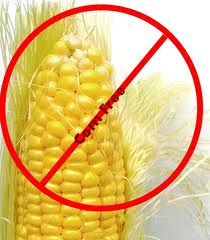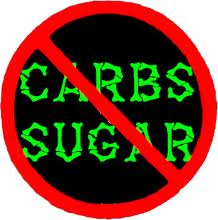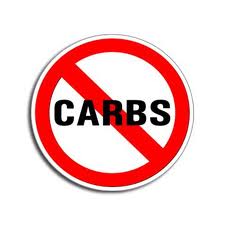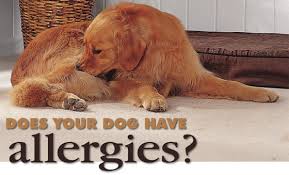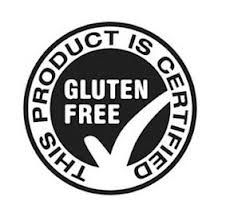This is a very thorough and extensive 35 page website about allopathic, holistic and integrative veterinary, cat / dog nutrition and what BigPharmaMafia, bad veterinarians and pet food companies who make very low-quality pet foods don’t or won’t tell you. It will always be a work in progress. The site is sometimes intentionally provocative & outspoken in order to disturb the status quo, which needs to be educated and must be changed! All of the information on this website is fact and has been extensively researched, sourced and documented and is extremely well received by both good veterinarians and pet parents, having had 500,000 hits in a single day!
Definitions of Ingredients to Avoid in Pet Food
You’ll be sick to your stomach when you read about what up to 90% of the ingredients in pet foods are doing to your cat or dog.

Roger Biduk; Definitions of Ingredients to Absolutely Avoid in Pet Foods
May 7th
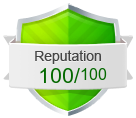 Roger Biduk “Did you know that pet foods can contain ingredients that are proven carcinogens such as BHA, BHT, and Ethoxyquin? These are banned in human foods in most parts of the world.”
Roger Biduk “Did you know that pet foods can contain ingredients that are proven carcinogens such as BHA, BHT, and Ethoxyquin? These are banned in human foods in most parts of the world.”
Added Colours (Blue Dye #2, Red Dye #40, Yellow Dye #5, Yellow Dye #6): Very bad stuff! Useless and dangerous ingredients. Dogs do not care about the color of their food. Don’t even think about buying pet foods with these ingredients.
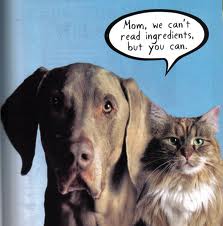 Strictly aimed at modifying the appearance of highly processed foods to make them look more appealing to humans, for example by hiding the grey color of poor quality rendered products or visible variations in ingredients or attempting to make a food look like it contains more meat by adding red dye.
Strictly aimed at modifying the appearance of highly processed foods to make them look more appealing to humans, for example by hiding the grey color of poor quality rendered products or visible variations in ingredients or attempting to make a food look like it contains more meat by adding red dye.
Believed to be carcinogenic and cause hyperactivity disorders. Banned from use in many countries.
FD&C Red No. 40 is derived from coal tar and is a possible carcinogen but is still widely used to keep meat looking fresh. Blue No. 2 is thought to increase dogs’ sensitivity to viruses and studies suggested that this dye caused brain tumors in male mice. Another color that is commonly used but that has not been fully tested is Yellow No. 5.
Yellow #6, Blue #1 and Blue #2 increase your pet’s sensitivity to parvo and other fatal viruses.
Both Red No. 2 and Violet No. 1 were banned by the FDA in the mid-seventies as possible carcinogens but prior to that were widely used in pet foods.
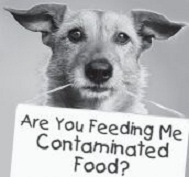 Found in the very lowest quality pet food. Indicates a very, very poor quality product. Run away from pet foods with these ingredients!
Found in the very lowest quality pet food. Indicates a very, very poor quality product. Run away from pet foods with these ingredients!
Pet foods with quality ingredients never, ever add color to their foods! Found in very low-quality petfoods from Pedigree, Purina, Ol’ Roy, 9Lives, Pup-Peroni, Retriever, Friskies, Alpo, Fancy Feast among many others.
How bad do pet foods have to be when color has to be added to make it look edible… enough said!
Animal Digest: Very bad stuff! A cooked-down, disgusting broth used for flavor rendered by chemical and/or enzymatic process. Don’t even think about buying pet foods with this ingredient.
This particular ingredient is anonymous, meaning it doesn’t even specify the source animals because the manufacturers don’t know what they are!
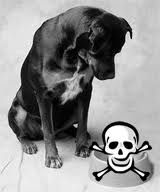 Made from unspecified parts of unspecified animals. The origin of the animals are definitely suspect, as they aren’t named. If the manufacturers wanted you to know what the sources were, they’d name them.
Made from unspecified parts of unspecified animals. The origin of the animals are definitely suspect, as they aren’t named. If the manufacturers wanted you to know what the sources were, they’d name them.
Ground up carcasses often come from “4-D animals” (dead, diseased, disabled, or dying prior to slaughter), all internal parts void of healthy meat.
Any kind of animal can be used including zoo animals, cats, dogs, goats, pigs, skunks, horses, rats, snakes, raccoons, possums, deer, foxes, misc. road kill, animals euthanized at shelters and veterinarian clinics, restaurant and supermarket refuse and so on.
Animal digest can contain cancerous or diseased tissue containing parasites, pus, worms, tumors and decomposed (spoiled) tissue.
Because animals are frequently shoved into the pit with flea collars still attached, organophosphate-containing insecticides get into the mix as well. The insecticide Dursban arrives in the form of cattle insecticide patches. Pharmaceuticals leak from antibiotics in livestock, and euthanasia drugs (pentobarbital) given to pets are also included. Heavy metals accumulate from a variety of sources: pet ID tags, surgical pins and needles.
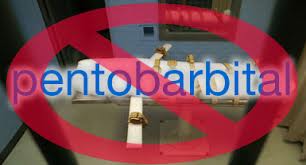 As if that’s not bad enough, according to the FDA it is probable that animal digest contains the lethal drug pentobarbital which is used to euthanize cats and dogs.
As if that’s not bad enough, according to the FDA it is probable that animal digest contains the lethal drug pentobarbital which is used to euthanize cats and dogs.
This is very problematic because pentobarbital can withstand the heat from rendering, meaning it stays in the food!
This also means that there may be euthanized cats and dogs in animal digest along with the disease (cancer, tumors, etc.) the animal died from!
There is no control over quality or contamination. Stay away from pet foods with this ingredient.
You will never, ever find animal digest in high quality commercially available pet foods, nor will you ever find it in healthy recipes for homemade pet meals. Where you’ll find it are in very affordable, highly processed, very low-quality pet foods.
Pet foods containing quality ingredients never, ever use animal digest in their foods!
Found in very low-quality pet foods from Purina, 9Lives, Alpo and Retreiver.
Animal Fat: Very bad stuff! Non-descriptive, “generic”, cheap fat source, often rancid prior to preserving with Vitamin E (gimmicky to cover poor quality fat). Don’t even think about buying pet foods with this ingredient.
This particular ingredient is anonymous, meaning it doesn’t even specify the source animals because the manufacturers don’t know what they are!
Made from unspecified parts of unspecified animals. The origin of the animals are definitely suspect, as they aren’t named. If the manufacturers wanted you to know what the sources were, they’d name them.
Usually contains high levels of rancid restaurant grease or other oils that are deemed inedible for humans. Restaurant grease comes from discarded oils and fats, even dangerous trans-fats that have been salvaged after frying foods at very high temperatures. Fats and oils raised to high cooking temperatures like this have been known to produce unwanted cancer-causing compounds known as carcinogens.
Animal fat comes from unspecified animals. The origin of the animals are definitely suspect, as it isn’t named. If the manufacturers wanted you to know what the source was, they’d name it.
Animal fat often comes from “4-D animals” (dead, diseased, disabled, or dying prior to slaughter).
All animals are used including zoo animals, cats, dogs, goats, pigs, horses, rats, snakes, skunks, raccoons, possums, deer, foxes, misc. road kill, animals euthanized at shelters and veterinarian clinics, restaurant and supermarket refuse and so on. They are all dumped into huge containers. A machine slowly grinds the entire mess. After it is chipped or shredded, it is cooked at temperatures of between 220 degrees F. and 270 degrees F. (104.4 to 132.2 degrees C.) for twenty minutes to one hour. The grease or tallow rises to the top, where it is removed from the mixture. And voila, this is the source of animal fat in most pet foods. Yummm!
Animal fat can contain cancerous or diseased tissue containing parasites, pus, worms, tumors and decomposed (spoiled) tissue.
Because animals are frequently shoved into the pit with flea collars still attached, organophosphate-containing insecticides get into the mix as well.
The insecticide Dursban arrives in the form of cattle insecticide patches. Pharmaceuticals leak from antibiotics in livestock, and euthanasia drugs given to pets are also included. Heavy metals accumulate from a variety of sources: pet ID tags, surgical pins and needles.
 As if that’s not bad enough, according to the FDA it is probable that animal fat contains the lethal drug pentobarbital which is used to euthanize cats and dogs.
As if that’s not bad enough, according to the FDA it is probable that animal fat contains the lethal drug pentobarbital which is used to euthanize cats and dogs.
This is very problematic because pentobarbital can withstand the heat from rendering, meaning it stays in the food! This also means that the euthanized animals are in animal fat along with the disease (cancer, tumors, etc.) the animal died from!
There is absolutely no control over quality or contamination.
Most often made up of rendered animal fat.
Found in the very lowest quality pet food. Indicates a very poor quality product. Run away from pet foods containing this ingredient!
You will never, ever find animal fat in high quality commercially available pet foods, nor will you ever find it in healthy recipes for homemade pet meals. Where you’ll find it are in very affordable, highly processed, very low-quality pet foods.
Pet foods containing quality ingredients never, ever use animal fat in their foods. They always name an animal source such as chicken fat.
Found in very low-quality pet foods from Pedigree, Purina, 9Lives, Skippy, Kal Kan, Science Diet, Retriever, Vita Bone Biscuits, Friskies, Whiskas among many others.
Barley: See Rice
Beef and Bone Meal, Beef Meal: Really bad stuff! A disgusting byproduct made from pork or beef parts which are not suitable for human consumption. Don’t even think about buying pet foods with this ingredient.
It can incorporate the entire animal, including the bones, but the quality cuts of meat are always removed. This is an inexpensive, low quality ingredient used to boost the protein percentage made by rendering plants.
As if that’s not bad enough, according to the FDA it is probable that beef and bone meal contains the lethal drug pentobarbital which is used to euthanize cats and dogs.
This is very problematic because pentobarbital can withstand the heat from rendering, meaning it stays in the food!
This also means that there may be euthanized cats and dogs in beef and bone meal along with the disease (cancer, tumors, worms, parasites, etc.) the animal died from!
Found in the very lowest quality pet food. Indicates a very poor quality product. Run away from pet foods containing this ingredient!
You will never, ever find beef and bone meal in high quality commercially available pet foods, nor will you ever find it in healthy recipes for homemade pet meals. Where you’ll find it are in very affordable, highly processed, very low-quality pet foods.
Pet foods containing quality ingredients never, ever use beef and bone meal in any of their foods.
Beef Tallow: Really bad stuff! Terrible source of fat. Nutritionally unfit for dogs or cats.
Includes the fat that comes from the disgusting production of meat meal.
Widely used in the soap and chemical industries to produce household items.
Fat with titer above 40 degrees Celsius, obtained from the tissue of cattle in the commercial process of rendering. Also called beef fat.
Dogs and cats like the taste of this fat, so it is often used to make very low-quality food more palatable.
Beef tallow is very low in linoleic acid and much cheaper for the pet food industry to use than nutritionally rich chicken fat.
Includes old restaurant grease, is very hard to digest, leads to diarrhea, premature aging and other serious problems.
Found in the very lowest quality pet food. Indicates a very poor quality product. Run away from pet foods containing this ingredient!
You will never, ever find beef tallow in high quality commercially available pet foods, nor will you ever find it in healthy recipes for homemade pet meals. Where you’ll find it are in very affordable, highly processed, very low-quality pet foods.
Pet foods containing quality ingredients never, ever uses beef tallow in any of their foods!
Found in very low-quality pet foods from Purina, Alpo and Friskies among others.
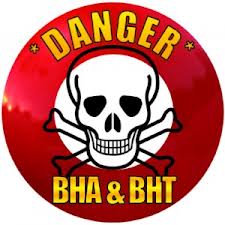 BHA (Butylated Hydroxyanisole): Really bad stuff! An additive that is used as a preservative in very low quality pet food.
BHA (Butylated Hydroxyanisole): Really bad stuff! An additive that is used as a preservative in very low quality pet food.
Causes enhanced stomach and urinary bladder carcinogenesis and squamous-cell carcinomas in stomachs (cancers of this type are among the most lethal and fastest acting, the swiftest effects being seen among animals with light colored fur.).
Banned for human consumption in most parts of the world.
Found in the very lowest quality pet food. Indicates a very poor quality product. Run away from pet foods containing this ingredient!
You will never, ever find BHA in high quality commercially available pet foods, nor will you ever find it in healthy recipes for homemade pet meals. Where you’ll find it are in very affordable, highly processed, very low-quality pet foods.
Pet foods containing quality ingredients never, ever use BHA in any of their foods!
Click here to go to “Cancer Causing Preservatives in Pet Foods“.
Found in very low-quality pet foods from Pedigree, Skippy, Pup-Peroni, Kal Kan, 9Lives, Whiskas, Ol’ Roy Hill’s Prescription Diet among many others.
BHA is a known carcinogen… enough said!
 BHT (Butylated Hydroxytoluene): An additive that is used as a preservative in very low quality pet food. It accumulates in the body fat and is known to cause cancer in animals and disrupt the body’s hormone balance.
BHT (Butylated Hydroxytoluene): An additive that is used as a preservative in very low quality pet food. It accumulates in the body fat and is known to cause cancer in animals and disrupt the body’s hormone balance.
Banned for human consumption in most parts of the world.
Laboratory studies have shown BHT causes cancer and results in detrimental reproductive effects in rats. Promoted urinary bladder carcinogenesis and could be a promoter of thyroid carcinogenesis.
Found in the very lowest quality pet food. Indicates a very poor quality product. Run away from pet foods containing this ingredient!
You will never, ever find BHT in high quality commercially available pet foods, nor will you ever find it in healthy recipes for homemade pet meals. Where you’ll find it are in very affordable, highly processed, very low-quality pet foods.
Pet foods containing quality ingredients never, ever use BHT in any of their foods!
Click here to go to “Cancer Causing Preservatives in Pet Foods“.
BHT is a known carcinogen… enough said!
Found in very low-quality pet foods from Pedigree and Retreiver.
Brewer’s Rice: Waste product, pure junk. Waste product from breweries, cheap, non-nutritive filler can be harsh on intestines and lead to diabetes. Useless filler.
Major source of pet allergies and a host of other problems in cats and dogs, triggers seizures and skin problems such as itching, excessive shedding, eye and ear infections and causes irritable bowel problems.
Found in the very lowest quality pet food. Indicates a very poor quality product. Run away from pet foods containing this ingredient!
In nature, carnivores (dogs) and obligate carnivores (cats) don’t eat brewer’s rice.
You will never, ever find brewer’s rice in high quality commercially available pet foods, nor will you ever find it in healthy recipes for homemade pet meals. Where you’ll find it are in very affordable, highly processed, very low-quality pet foods.
Pet foods containing quality ingredients never, ever use brewer’s rice in any of their foods.
Found in very low-quality pet foods from Purina, Pedigree, Black Gold, Ol’ Roy, Science Diet, Redpaw, Hill’s Prescription Diet, Iams and Royal Canin Veterinary Therapeutic Formulas.
Brewer’s Yeast Extract: Condensed liquid left over from brewery process. Can become toxic to the liver.
Major source of pet allergies and a host of other problems in cats and dogs.
Found in low quality pet foods.
In nature, carnivores (dogs) and obligate carnivores (cats) don’t eat brewer’s yeast extract.
You will never, ever find brewer’s yeast extract in high quality commercially available pet foods, nor will you ever find it in healthy recipes for homemade pet meals. Where you’ll find it are in very affordable, highly processed, very low-quality pet foods.
Pet foods containing quality ingredients never, ever use brewer’s yeast extract in any of their foods.
Brown Rice: See Rice
Caramel Color: Used in Pepsi and Coke, causes cancer in laboratory animals. Found in very low-quality pet foods like Purina, Pup-Peroni, Skippy and Hill’s Prescription Diet. How bad do pet foods have to be when color has to be added to make it look edible… enough said!
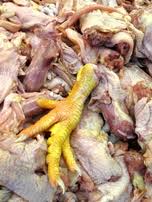 Chicken, Poultry or Duck by-Products, Chicken or Poultry by-Product Meal: Really bad stuff! Waste product, pure junk, very cheap protein source. The word “by-product” is an instant turn off when it comes to pet food!
Chicken, Poultry or Duck by-Products, Chicken or Poultry by-Product Meal: Really bad stuff! Waste product, pure junk, very cheap protein source. The word “by-product” is an instant turn off when it comes to pet food!
Disgusting stuff! Made from anything from the chicken that is not fit for human consumption, including cancerous tissue.
Found in the very lowest quality pet food. Indicates a very poor quality product. Run away from pet foods containing these ingredients!
All parts that is animal is used. This includes unspecified parts such as bones, blood, intestines, lungs, ligaments, heads, feet, ears, neck and teeth!
Ground up chicken carcasses often come from “4-D animals” (dead, diseased, disabled, or dying prior to slaughter), all internal parts void of healthy meat.
Unbelievable but true, chicken by-products can contain cancerous or diseased tissue containing parasites, pus, worms, tumors, decomposed (spoiled) tissue and may contain up to 25% fecal matter.
There is no control over quality or contamination.
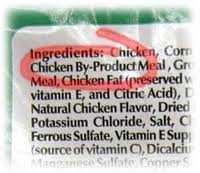 Don’t forget that chicken by-products consists of any parts of the animal OTHER than meat. There is NO MEAT in chicken by-products!
Don’t forget that chicken by-products consists of any parts of the animal OTHER than meat. There is NO MEAT in chicken by-products!
If there is any use for any part of the animal that brings more profit than selling it as a “chicken by-product”, rest assured it will appear in such a product rather than in the “chicken by-product” dumpster.
Pet foods containing quality ingredients never, ever use chicken by-products or ANY by-products in any of their foods!
You will never, ever find any type of by-products in high quality commercially available pet foods, nor will you ever find it in healthy recipes for homemade pet meals. Where you’ll find it are in very affordable, highly processed, very low-quality pet foods.
Found in very low-quality pet foods from Pedigree, Purina, Kal Kan, Hill’s Prescription Diet, Iams, Friskies, Whiskas, Eukanuba, Royal Canin Veterinary Diets, 9Lives, Fancy Feast, Vita Bone Biscuits and Milk Bone Brushing Chews among many others.
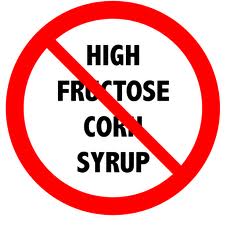 Corn, Whole Grain Corn, Corn Meal, Corn Grits, Corn Starch, Corn Protein: Really bad stuff! Waste products, pure junk, very poor protein source. Corn and corn derivatives are among the worst (and cheapest) ingredients in pet food.
Corn, Whole Grain Corn, Corn Meal, Corn Grits, Corn Starch, Corn Protein: Really bad stuff! Waste products, pure junk, very poor protein source. Corn and corn derivatives are among the worst (and cheapest) ingredients in pet food.
If you think the corn in pet foods are of the human-grade kind similar to the “peaches and cream” or “Green Giant Niblets” that we humans eat, think again!
Inexpensive feed-grade corn can include mold or fungus which has caused death. The feed values of this type of corn are grown primarily as a feed grain for livestock, not for cats and dogs.
Useless, cheap filler used to up the protein count.
It does absolutely nothing for the animal and dogs and cats have a very hard time digesting corn (if they can at all), causes serious digestion problems such as diarrhea or constipation.
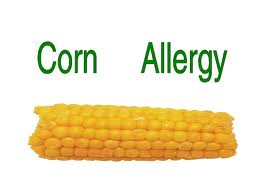 Major source of severe pet allergies and a host of other problems in cats and dogs, adds sugar and is a very poor protein source. Sugar causes diabetes, hypoglycemia, weight gain, nervousness and fearful behavior, cataracts, ill health in general and a host of other symptoms and diseases.
Major source of severe pet allergies and a host of other problems in cats and dogs, adds sugar and is a very poor protein source. Sugar causes diabetes, hypoglycemia, weight gain, nervousness and fearful behavior, cataracts, ill health in general and a host of other symptoms and diseases.
Corn in pet foods is most likely 100% GMO, triggers seizures, skin problems such as itching and excessive shedding, ear and eye infections and causes irritable bowel problems.
Found in very low quality pet foods that use cheap corn instead of more expensive meat as a protein source. Indicates a very poor quality product. Avoid pet food with these ingredients!
In nature, carnivores (dogs) and obligate carnivores (cats) don’t eat corn. Cows and pigs are fed corn in captivity but are not part of their natural diet.
Pet foods containing quality ingredients never, ever use any corn products or corn derivatives in any of their foods!
You will never, ever find corn or any type of corn derivative in high quality commercially available pet foods, nor will you ever find it in healthy recipes for homemade pet meals. Where you’ll find it are in very affordable, highly processed, very low-quality pet foods.
Found in very low-quality pet foods from Pedigree, Rachael Ray Nutrish, Purina, Ol’ Roy, Royal Canin, Hill’s Prescription Diet, Hill’s Science Diet, Iams, Redpaw, Alpo, Kal Can, Eukanuba, Retriever, Royal Canin Veterinary Care Nutrition, Black Gold, Royal Canin Veterinary Therapeutic Formulas, 9Lives, Friskies and Vita Bone Biscuits among many others.
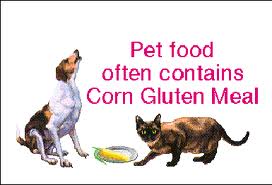 Corn Gluten, Corn Gluten Meal: Really bad stuff! Waste product, pure junk, very poor protein source. Widely used as a weed suppressant, herbicide and fertilizer for lawns. One of the worst (and cheapest) ingredients in pet food.
Corn Gluten, Corn Gluten Meal: Really bad stuff! Waste product, pure junk, very poor protein source. Widely used as a weed suppressant, herbicide and fertilizer for lawns. One of the worst (and cheapest) ingredients in pet food.
Corn gluten is often imported from China and could be very dangerous.
Found in very low quality pet foods that use cheap corn products instead of more expensive meat as a protein source. Indicates a very poor quality product. Avoid pet food with this ingredient!
Corn gluten is a useless, cheap filler. The remainder of the corn after the best parts of the corn have been removed. Better used as a popular weed suppressant, herbicide and fertilizer than an ingredient in pet food.
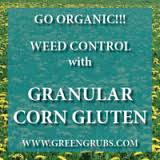 It is the by-product after the manufacture of corn syrup or starch, and is the dried residue after the removal of the bran, germ, and starch.
It is the by-product after the manufacture of corn syrup or starch, and is the dried residue after the removal of the bran, germ, and starch.
It does absolutely nothing for the animal, is used as a cheap binder and cats and dogs cannot digest it.
Corn gluten is highly allergenic, adds sugar and is a very poor protein source. Major source of pet allergies and a host of other problems in cats and dogs.
Sugar causes diabetes, hypoglycemia, weight gain, nervousness and fearful behavior, cataracts, ill health in general and a host of other symptoms and diseases leading to premature death..
Corn gluten triggers seizures, skin problems such as itching and excessive shedding, ear and eye infections and causes irritable bowel problems.
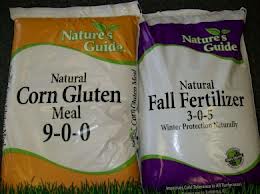 Carnivores (dogs) and obligate carnivores (cats) don’t eat corn gluten.
Carnivores (dogs) and obligate carnivores (cats) don’t eat corn gluten.
Pet foods containing quality ingredients never, ever use any corn products or corn derivatives in any of their foods.
You will never, ever find corn gluten in high quality commercially available pet foods, nor will you ever find it in healthy recipes for homemade pet meals. Where you’ll find it are in very affordable, highly processed, very low-quality pet foods.
Found in very low-quality pet foods from Pedigree, Alpo, Purina, Ol’ Roy, Black Gold, Royal Canin, Kal Kan, Hill’s Science Diet, Retriever, Royal Canin Veterinary Therapeutic Formulas, Friskies, Whiskas, Royal Canin Veterinary Care Nutrition and Hill’s Science Diet among many others.
Dehydrated Poultry Protein: See hydrolysed poultry protein
DL-Methionine: Another synthetic ingredient to add to the long list that is nutritionally useless and found in low-quality pet foods that contain minimal amounts (or none at all) of meat proteins, are heavily weighted to vegetable proteins like soy or are low calorie foods diluted with inert ingredients such as cereals and cellulose (another name for sawdust).
Synthetic methionine is also added to increase palatability in foods that are low in meat, used as a flavor-enhancer in low-quality pet foods. Found in Hill’s Prescription Diets.
Dried Beet Pulp: Waste product, pure junk. Cheap filler/fiber causes sugar rush/addiction to food, hyperactivity and allergies.
May cause allergies, seizures, skin problems such as itching and excessive shedding, ear and eye infections.
Dried beet pulp is known to be an artificial stool hardener. This is dangerous because when the stool remains in the colon too long, it exudes toxins into the blood stream, which could lead to a variety of short term (E.Coli) or long term health problems.
 Sugar in beet pulp causes diabetes, hypoglycemia, weight gain, nervousness and fearful behavior, cataracts, ill health in general and a host of other symptoms and diseases.
Sugar in beet pulp causes diabetes, hypoglycemia, weight gain, nervousness and fearful behavior, cataracts, ill health in general and a host of other symptoms and diseases.
It triggers seizures, skin problems such as itching and excessive shedding, ear and eye infections and causes irritable bowel problems.
In nature, carnivores (dogs) and obligate carnivores (cats) do not eat dried beet pulp.
Found in low quality pet food. Avoid pet food with this ingredient!
Pet foods containing quality ingredients never, ever use dried beet pulp in any of their foods!
You will never, ever find dried beet pulp in high quality commercially available pet foods, nor will you ever find it in healthy recipes for homemade pet meals. Where you’ll find it are in very affordable, highly processed, very low-quality pet foods.
Found in very low-quality pet foods from Pedigree, Purina, Royal Canin, Black Gold, Rachael Ray Nutrish, Science Diet, Hill’s Prescription Diet, Iams, Redpaw, Eukanuba, Vets Choice, Royal Canin Veterinary Therapeutic Formulas and Royal Canin Veterinary Care Nutrition.
Dried Egg Product: Waste product, pure junk. Cheap source of protein, waste product of egg industry, can contain undeveloped and diseased eggs, floor sweepings, etc. Not fit for human consumption.
Found in low quality pet food.
Pet foods containing quality ingredients never, ever use dried egg product in any of their foods. They only uses fresh, whole eggs.
You will never, ever find dried egg product in high quality commercially available pet foods, nor will you ever find it in healthy recipes for homemade pet meals. Where you’ll find it are in very highly processed, very low-quality pet foods such as Hill’s Prescription Diet, Iams, Eukanuba and Vets Choice.
Also found in Taste of The Wild which markets itself as a high-quality dog food.
Dried Whey: Pure junk, cheap filler, a by-product of the cheese industry. Dried whey consists of about 75% carbohydrate. Very cheap protein source, used instead of more expensive meat.
You will never, ever find dried whey in high quality commercially available pet foods, nor will you ever find it in healthy recipes for homemade pet meals. Where you’ll find it are in very highly processed, very low-quality pet foods such as Purina.
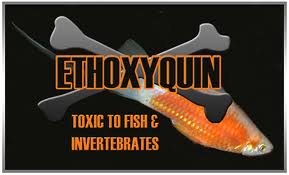 Ethoxyquin: A very dangerous additive that is used as a preservative in very low quality pet food.
Ethoxyquin: A very dangerous additive that is used as a preservative in very low quality pet food.
Listed and identified as a hazardous chemical by OSHA (Occupational Safety and Health Association). It has a rating of 3 on a scale of 1 to 6, with 6 being super toxic requiring less than 7 drops to cause death.
When manufactured by Monsanto, the containers are marked with the word POISON and feature a prominent skull and crossbones sign. Monsanto even makes sure that warning labels on containers of ethoxyquin warn workers to wear eye and respiratory protection and to only handle it with gloves. Monsanto makes no representations and will not be responsible for damages of any nature whatsoever.
The U. S. Dept. of Agriculture for toxicology information lists ethoxyquin in their Farm Chemical Hand-Book as a PESTICIDE, in the same group as Agent Orange!!!).
Ethoxiquin is banned in Europe as a carcinogen.
Ethoxiquin promotes kidney carcinogenesis, significantly increased incidence of stomach tumors, and enhanced bladder carcinogenesis.
According to Dr. Wendell Belfield, DVM practicing veterinarian for some 26 years, ethoxyquin is suspected of causing cancer and that propylene glycol (a pet food ingredient closely related to anti-freeze) causes destruction of red blood cells.
Found in the very lowest quality pet food. Indicates a very poor quality product. Run away from pet foods containing this ingredient!
Pet foods containing quality ingredients never, ever use ethoxyquin in any of their foods!
Click here to go to “Cancer Causing Preservatives in Pet Foods“.
Ethoxyquin is a known carcinogen… enough said!
Ethylenediamine: A solvent, urinary acidifier and color promoter that can irritate the skin and mucus membranes and may cause asthmatic reactions and allergic skin rashes.
Found in the very lowest quality pet food. Indicates a very poor quality product. Avoid pet foods with this ingredient.
Pet foods containing quality ingredients never, ever use ethylenediamine in any of their foods!
You will never, ever find ethylenediamine in high quality commercially available pet foods, nor will you ever find it in healthy recipes for homemade pet meals. Where you’ll find it are in very affordable, highly processed, very low-quality pet foods.
Fish, Ocean Fish: Generic product name, waste not fit for human consumption. Often from from rancid fish, high mercury content.
This particular ingredient is anonymous, meaning it doesn’t even specify the fish source because the manufacturers don’t know what they are!
Made from unspecified parts of unspecified fish. The origin of the fish are definitely suspect, as they aren’t named. If the manufacturers wanted you to know what the sources were, they’d name them. Quality pet foods always name their fish source such as more expensive whole salmon, whole herring, pollock, whole flounder, boneless walleye, boneless northern pike and boneless lake whitefish.
Fish, Fish Meal, Ocean Fish Meal: Generic product name, waste not fit for human consumption. Often from from rancid fish, high mercury content and almost always comes from China.
This particular ingredient is anonymous, meaning it doesn’t even specify the fish source because the manufacturers don’t know what they are!
Made from unspecified parts of unspecified fish. The origin of the fish are definitely suspect, as they aren’t named. If the manufacturers wanted you to know what the sources were, they’d name them.
According to U.S. law (Coast Guard & Department of Homeland Security) fish meal MUST be preserved with an antioxident, specifically ethoxyquin, a know carcinogen (see definition above) unless the manufacturer has a special permit to use other antioxidents. http://www.woodhavenlabs.com/fishmeal.html
Stay away from pet foods with this ingredient.
Pet foods containing quality ingredients never, ever use fish meal in any of their products. They will always name a fish source such as more expensive whitefish meal or salmon meal that is guaranteed to be ethoxyquin-free.
You will never, ever find fish meal in high quality commercially available pet foods, nor will you ever find it in healthy recipes for homemade pet meals. Where you’ll find it are in very affordable, highly processed, very low-quality pet foods.
Found in very low quality pet foods such as Black Gold and many others.
Fish Oil: Generic product name, usually waste not fit for human consumption. Could be from rancid fish, high mercury content and most always comes from China.
This particular ingredient is anonymous, meaning it doesn’t even specify the fish source because the manufacturers don’t know what they are!
Made from unspecified parts of unspecified fish. The origin of the fish are definitely suspect, as they aren’t named. If the manufacturers wanted you to know what the sources were, they’d name them.
Found in low quality pet food.
Pet foods containing quality ingredients never, ever use fish oil in any of their products. They always name a fish source such as more expensive salmon oil.
You will never, ever find fish oil for homemade pet meals. Where you’ll find it are in very affordable, highly processed, very low-quality pet foods.
Found in very low-quality pet foods from Purina, Royal Canin, Hill’s Prescription Diet, Redpaw, Eukanuba, Iams, Fancy Feast, Royal Canin Veterinary Therapeutic Formulas and Royal Canin Veterinary Care Nutrition.
Glyceryl Monostearate: An emulsifier (breaks down fats), lethal to lab rats, still under investigation by FDA. Widely used in foodstuffs, cosmetic, medicine and plastic processing industries.
Can contain up to 200 ppm butylated hydroxytoluene (BHT) as a preservative (a known carcinogen). Stay away from this baby.
Found in the very lowest quality pet food. Indicates a very poor quality product. Run away from pet foods containing this ingredient!
Pet foods containing quality ingredients never, ever use glyceryl monostearate in any of their foods!
You will never, ever find glyceryl monostearate in high quality commercially available pet foods, nor will you ever find it in healthy recipes for homemade pet meals. Where you’ll find it are in very affordable, highly processed, very low-quality pet foods.
“What should you feed your cat/dog? Easy, feed them what they’ve been eating for millions of years, a balanced raw meat diet. If feeding a commercial diet, wet is best followed by kibble. Make sure the foods don’t include even one ingredient in this list of “Ingredients to Absolutely Avoid in Pet Foods.” Roger Biduk
Ground Psyllium Husks: Another word for Metamucil, a laxative. Has absolutely no nutritional value.
Found in the very lowest quality pet food. Indicates a very poor quality product.
Pet foods containing quality ingredients never, ever use ground psyllium husks in any of their foods!
You will never, ever find ground psyllium husks in high quality commercially available pet foods, nor will you ever find it in healthy recipes for homemade pet meals. Where you’ll find it are in very affordable, highly processed, very low-quality pet foods.
Hydrolysed Animal Proteins, Hydrolysed Collagen, Hydrolysed Poultry Protein: The worst of the worst ingredients that would be dumped in the landfill. These ingredients are anonymous because the manufacturer doesn’t know what they are! Hydrolysed Poultry Protein is actually bird feathers in Royal Canin formulas!
The only thing worse and more dangerous than Royal Canin, Royal Canin Veterinary Care Nutrition and Royal Canin Veterinary Therapeutic Formulas are the vets who sell them!
Liver: Generic product name, waste not fit for human consumption.
This particular ingredient is anonymous, meaning it doesn’t even specify the liver source because the manufacturers don’t know what they are! The origin of the liver is definitely suspect as it isn’t named.
If the manufacturers wanted you to know what the sources were, they’d name them.
Found in low-quality pet foods like Fancy Feast, Pup-Peroni
Maize – See Corn
Meat and Bone Meal, Meat Meal: Really bad stuff! A disgusting product made from unspecified parts of unspecified animals which are not suitable for human consumption. Don’t even think about buying pet foods with this ingredient.
The origin of the animals are definitely suspect, as it isn’t named. If the manufacturers wanted you to know what the source was, they’d name it.
This particular ingredient is anonymous, meaning it doesn’t even specify the source animals because the manufacturers don’t know what they are!
Made from unspecified parts of unspecified animals. The origin of the animals are definitely suspect, as they aren’t named. If the manufacturers wanted you to know what the sources were, they’d name them.
At the rendering plant, slaughterhouse material, restaurant and supermarket refuse, dead stock, road kill, and euthanized companion animals are dumped into huge containers. A machine slowly grinds the entire mess. After it is chipped or shredded, it is cooked at temperatures of between 220 degrees F. and 270 degrees F. (104.4 to 132.2 degrees C.) for twenty minutes to one hour. The grease or tallow rises to the top, where it is removed from the mixture. This is the source of animal fat in most pet foods. The remaining material, the raw, is then put into a press where the moisture is squeezed out. We now have meat and bone meal.
Meat and bone meal is thought to have been a contributing factor in mad cow disease. It is no longer an approved ingredient in many countries. It is however a common ingredient in the U.S. in commercial dog food.
Meat and bone meal is now utilized in Europe as a fossil-fuel replacement, and is commonly used as a fuel in cement kilns, landfilling and in incinerators.
 As if that’s not bad enough, according to the FDA it is probable that meat and bone meal contains the lethal drug pentobarbital which is used to euthanize cats and dogs.
As if that’s not bad enough, according to the FDA it is probable that meat and bone meal contains the lethal drug pentobarbital which is used to euthanize cats and dogs.
This is very problematic because pentobarbital can withstand the heat from rendering, meaning it stays in the food!
This also means that there may be euthanized cats and dogs in animal digest along with the disease (cancer, tumors, etc.) the animal died from!
Ground up carcasses often come from “4-D animals” (dead, diseased, disabled, or dying prior to slaughter), all internal parts void of healthy meat.
Any kind of animal can be used including zoo animals, cats, dogs, goats, skunks, pigs, horses, rats, snakes, raccoons, possums, deer, foxes, misc. road kill, animals euthanized at shelters and veterinarian clinics, restaurant and supermarket refuse and so on.
Meat meal/by-products can contain cancerous or diseased tissue containing parasites, pus, worms, tumors and decomposed (spoiled) tissue.
Because animals are frequently shoved into the pit with flea collars still attached, organophosphate-containing insecticides get into the mix as well. The insecticide Dursban arrives in the form of cattle insecticide patches. Pharmaceuticals leak from antibiotics in livestock, and euthanasia drugs given to pets are also included. Heavy metals accumulate from a variety of sources: pet ID tags, surgical pins and needles.
All parts that is animal is used. This includes unspecified parts such as bones, blood, intestines, lungs, ligaments, heads, feet, ears, neck and teeth!
Found in the very lowest quality pet food. Indicates a very poor quality product. Run away from pet foods containing this ingredient!
This is an inexpensive, low quality ingredient used to boost the protein percentage made by rendering plants.
Pet foods containing quality ingredients never, ever use meat and bone meal in any of their products.
You will never, ever find meat and bone meal in high quality commercially available pet foods, nor will you ever find it in healthy recipes for homemade pet meals. Where you’ll find it are in very affordable, highly processed, very low-quality pet foods.
Found in very low-quality pet foods from Purina, Friskies, Pedigree, 9Lives, Milk-Bone, Kal Can, Ol’ Roy, Retriever and many others.
Meat By-Products, Meat By-Product Meal: Really bad stuff! Disgusting stuff! Made from anything from the animal that is not fit for human consumption, including cancerous tissue. The word “by-product” is an instant turn off when it comes to pet food.
This particular ingredient is anonymous, meaning it doesn’t even specify the source animals because the manufacturers don’t know what they are!
Made from unspecified parts of unspecified animals. The origin of the animals are definitely suspect, as they aren’t named. If the manufacturers wanted you to know what the animals were, they’d name them.
Found in the very lowest quality pet food. Indicates a very poor quality product. Run away from pet foods containing these ingredients!
Made from unspecified parts of unspecified animals. The origin of the animals are definitely suspect, as it isn’t named. If the manufacturers wanted you to know what the source was, they’d name it.
Ground up carcasses often come from “4-D animals” (dead, diseased, disabled, or dying prior to slaughter), all internal parts void of healthy meat.
Any kind of animal can be used including zoo animals, cats, dogs, goats, pigs, horses, rats, snakes, skunks, raccoons, possums, deer, foxes, misc. road kill, animals euthanized at shelters and veterinarian clinics, restaurant and supermarket refuse and so on.
Meat meal/by-products can contain cancerous or diseased tissue containing parasites, pus, worms, tumors and decomposed (spoiled) tissue.
Because animals are frequently shoved into the pit with flea collars still attached, organophosphate-containing insecticides get into the mix as well. The insecticide Dursban arrives in the form of cattle insecticide patches. Pharmaceuticals leak from antibiotics in livestock, and euthanasia drugs given to pets are also included. Heavy metals accumulate from a variety of sources: pet ID tags, surgical pins and needles.
All parts that is animal is used. This includes unspecified parts such as bones, blood, intestines, lungs, ligaments, heads, feet, ears, neck and teeth!
Don’t forget that meat by-products consists of any parts of the animal OTHER than meat. There is NO MEAT in meat by-products!
If there is any use for any part of the animal that brings more profit than selling it as a “meat by-product”, rest assured it will appear in such a product rather than in the “meat by-product” dumpster.
Pet foods containing quality ingredients never, ever use meat by-products or ANY by-products in any of their foods!
You will never, ever find any type of by-product in high quality commercially available pet foods, nor will you ever find it in healthy recipes for homemade pet meals. Where you’ll find it are in very affordable, highly processed, very low-quality pet foods like Fancy Feast, Skippy, Pup-Peroni, Ol’ Roy, Purina, Alpo and Pedigree.
Menadione Sodium Bisulfate: Very cheap, dangerous synthetic version of vitamin K.
Can be highly toxic in high doses. Hazard information regarding menadione lists “carcinogenic effects” and states “the substance is toxic to kidneys, lungs, liver, mucous membranes. Repeated or prolonged exposure to the substance can produce target organs damage.
Found in the very lowest quality pet food. Indicates a very poor quality product. Run away from pet foods containing this ingredient!
Pet foods containing quality ingredients never, ever use menadione sodium bisulfate in any of their foods!
You will never, ever find menadione sodium bisulfate in high quality commercially available pet foods, nor will you ever find it in healthy recipes for homemade pet meals. Where you’ll find it are in very affordable, highly processed, very low-quality pet foods from Purina, Black Gold, Rachael Ray Nutrish, Kal Kan, Ol’ Roy, mOrigins, Friskies, Fancy Feast, Retriever among others.
Oats, Oat Groats, Oatmeal: See Rice
Ocean Fish: See Fish
Ocean Fish Meal: See Fish Meal
Pea Fiber: Cheap filler and high in insoluble fiber. Useless starch. Neither ‘fillers’ nor high fiber ingredients are part of a balanced, species-appropriate diet for dogs and cats.
Starches are carbohydrates and are hard to digest. They metabolize into glucose (sugar) and convert into fat resulting in serious health problems such as periodontal disease, hypoglycemia, hyperactivity, diabetes, obesity, cataracts and allergies (to name just a few) and may result in premature death.
According to PetfoodIndustry.com, in pet foods, pea fiber “… is used as a nutritionally functional fiber”. Functional fibers are non-digestible carbohydrates that have been isolated from foods, something that is totally useless to dogs and cats.
You won’t find pea fiber in high quality commercially available pet foods, nor will you find it in healthy recipes for homemade pet meals. Where you’ll find it are in very affordable, highly processed, low-quality pet foods.
In nature, carnivores (dogs) and obligate carnivores (cats) don’t eat pea fiber.
Phosphoric Acid: A clear, colorless liquid, H3PO4, used in fertilizers, detergents, pharmaceuticals and pet foods.
Another synthetic ingredient to add to the long list that is nutritionally useless and used in inexpensive, poor quality pet foods as flavoring, emulsifier and discoloration inhibitor. Used for example as a flavoring for Coca Cola.
Pork Blood Meal: Enough said… Found in low quality pet foods like Redpaw.
Pork By-Products: Really bad stuff! Waste product, pure junk, very cheap protein source. The word “by-product” is an instant turn off when it comes to pet food!
Disgusting stuff! Made from anything from the pig that is not fit for human consumption and that’s not meat.
Found in the very lowest quality pet food. Indicates a very poor quality product. Run away from pet foods containing this ingredient!
All parts that is animal is used. This includes unspecified parts such as bones, blood, intestines, lungs, ligaments, heads, feet, ears, neck and teeth!
Ground up pig carcasses often come from “4-D animals” (dead, diseased, disabled, or dying prior to slaughter), all internal parts void of healthy meat.
Unbelievable but true, pork by-products can contain cancerous or diseased tissue containing parasites, pus, worms, tumors, decomposed (spoiled) tissue and often contains up to 25% fecal matter.
There is no control over quality or contamination.
Don’t forget that pork by-products consists of any parts of the animal OTHER than meat. There is NO MEAT in pork by-products!
If there is any use for any part of the animal that brings more profit than selling it as a “por by-product”, rest assured it will appear in such a product rather than in the “pork by-product” dumpster.
Pet foods containing quality ingredients never, ever use pork by-products or ANY by-products in any of their foods!
You will never, ever find any type of by-products in high quality commercially available pet foods, nor will you ever find it in healthy recipes for homemade pet meals. Where you’ll find it are in highly processed, very low-quality pet foods.
Found in low-quality pet foods such as Hill’s Prescription Diet and Royal Canin Veterinary Exclusive (both sold only by veterinarians!!!).
Pork Meat and Bone Meal: Discusting stuff. See “Beef and Bone Meal”, substitute “pork” for “beef”. Found in low quality pet foods like Redpaw.
Poultry By-Products, Poultry By-Product Meal: See “Chicken By-Products”.
Poultry Fat:Anonymous named ingredient. Waste product. May include fat from chickens, ducks, emus, geese, indian peafowl, mute swan, ostritch, pigeon, turkey, guineafowl, common pheasant, golden pheasant, rhea, etc.
Good pet food fromulas use named fat ingredients such as chicken fat.
Found in low quality pet foods from Redpaw.
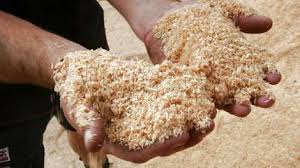 Powdered Cellulose: Another word for sawdust!
Powdered Cellulose: Another word for sawdust!
Cheap filler/source of fiber. Purified, mechanically disintegrated cellulose prepared by processing alpha cellulose obtained as a pulp from fibrous plant material.
Causes irritable bowel problems, very harsh on digestive tract.
In nature, carnivores (dogs) and obligate carnivores (cats) don’t eat powdered cellulose.
Found in the very lowest quality pet food. Indicates a very poor quality product. Avoid pet food with this ingredient!
Pet foods containing quality ingredients never, ever use powdered cellulose (or cardboard or sawdust) in any of their foods!
You will never, ever find powdered cellulose in high quality commercially available pet foods, nor will you ever find it in healthy recipes for homemade pet meals. Where you’ll find it are in very affordable, highly processed, very low-quality pet foods.
Found in very low-quality pet foods from Royal Canin, Hill’s Prescription Diet, Royal Canin Veterinary Therapeutic Formulas and Royal Canin Veterinary Care Nutrition.
Propyl Gallate: Possible links to cancer and other effects. This chemical is known to mimic the female hormone estrogen.
Can cause adverse health effects on reproduction, healthy fetus development and hinder sperm production and count in males.
Commonly used in beauty products such as lipstick, bath items, skin cleansers, lotions, tanners, and other topical applications.
No reason to have this chemical in pet foods.
Found in the very lowest quality pet food. Indicates a very poor quality product. Avoid pet food with this ingredient!
Pet foods containing quality ingredients never, ever use propyl gallate in any of their foods!
You will never, ever find propyl gallate in high quality commercially available pet foods, nor will you ever find it in healthy recipes for homemade pet meals. Where you’ll find it are in very affordable, highly processed, very low-quality pet foods.
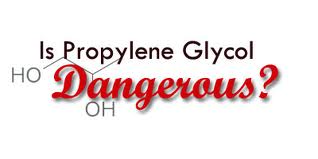 Propylene Glycol: Another word for antifreeze. Because of its proven ability to cause a serious type of blood disease, Heinz body anemia, propylene glycol has been banned by the FDA for use in cat food.
Propylene Glycol: Another word for antifreeze. Because of its proven ability to cause a serious type of blood disease, Heinz body anemia, propylene glycol has been banned by the FDA for use in cat food.
Now, get this… believe it or not, it can still be used in dog food!
Found in the very lowest quality pet food. Indicates a very poor quality product. Run away from pet food containing this ingredient!
Pet foods containing quality ingredients never, ever use propylene glycol in any of their foods!
Found in very low-quality pet foods from Purina, Pup-Peroni, Milk Bone Brushing Chews among many others.
Propylene is the active ingredient in antifreeze… enough said!
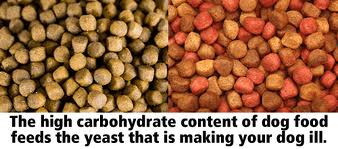 Rice, Rice Protein, Rice Flour, Brown Rice, Sorghum, Oats, Barley, Oat Groats, Oatmeal: Really bad stuff! Pure junk. Waste products, very poor protein sources. These are used as most other grains would be in pet food – as cheap fillers/ingredients to boost protein levels instead of using high quality meat sources and are very harmful to dogs and cats.
Rice, Rice Protein, Rice Flour, Brown Rice, Sorghum, Oats, Barley, Oat Groats, Oatmeal: Really bad stuff! Pure junk. Waste products, very poor protein sources. These are used as most other grains would be in pet food – as cheap fillers/ingredients to boost protein levels instead of using high quality meat sources and are very harmful to dogs and cats.
Read Grains are Very, Very Bad for Your Obligate Carnivore Cats and Carnivore Dogs.
Read Your Dog is a Carnivore and a Domesticated Wolf.
A highly processed, grain-based diet fed to an animal designed to thrive on a meat-based, fresh food diet is very likely to produce symptoms of ill health over time. Diets to address disease most frequently deal with the symptoms that are the result of a lifetime of inappropriate food, not the true cause of their symptoms.
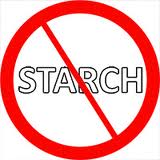 The optimum diet for a dog or a cat should closely resemble their natural diet.
The optimum diet for a dog or a cat should closely resemble their natural diet.
A diet balanced heavily toward grain promotes insulin production and the production of inflammatory chemicals. Over-production of insulin makes it hard for the body to maintain its correct weight, and can lead to diabetes and other problems. An overabundance of inflammatory chemicals means more aches and pains.
The biochemical/physiological basis for problems directly related to the ingestion of grains relates to blood insulin levels in response to blood sugar levels. The ultimate effects of high carbohydrate diets include swings in blood sugar and insulin, insulin resistance and high blood sugar.
This in turn results in pathological alterations in eicosanoid production which in turn leads to obesity, hypertension, fluid retention, musculoskeltal, vascular, renal, hepatic, CNS and cardiac disease, and finally in many instances cancer. That is, the ingestion of grain and other starchy foods (including simple sugars of course) produces or helps in a major way to produce most if not all of the degenerative diseases that pet owners pay vets thousands of dollars to cure.
There are other factors which are involved, particularly when it comes to feeding commercial pet food, including a lack of protective factors, abysmally poor protein quality, the presence of toxins in abundance, and the almost complete absence of healthy fats.
In an evolutionary sense, a wild dog’s and cat’s diet contain no grains. They never eat cooked grain. In eating the intestinal contents of their prey they may eat some grain which is usually immature and green. Most certainly they do not eat a totally grain based diet like the modern dog or cat, subjected to a lifetime of dried dog and cat food. Even if their prey had been eating mature seed heads, by the time the grain is consumed, it has been ground to a paste and soaked in the juices of the herbivores intestines. A totally different product to the masses of cooked and processed grains fed to dogs today.
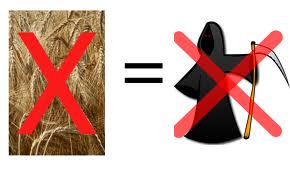 Slick marketing ads and television commercials from pet food companies or from veterinarians who know absolutely nothing about animal nutrition will say that carbohydrates from whole grains are easy to digest and give your pets “energy & vitality”. Actually, carbs only make your animal companions fat like they do in humans. But unlike humans, carnivores get their energy from protein and fats, NOT from carbohydrates!
Slick marketing ads and television commercials from pet food companies or from veterinarians who know absolutely nothing about animal nutrition will say that carbohydrates from whole grains are easy to digest and give your pets “energy & vitality”. Actually, carbs only make your animal companions fat like they do in humans. But unlike humans, carnivores get their energy from protein and fats, NOT from carbohydrates!
If grains are nutritionally useless to cats and dogs, then why are they in most low quality pet foods? For one and only one reason – the huge profits for pet food companies, because grains are so cheap compared to more expensive human-grade meats!
Here’s another very, very important point to consider: If you think the grains and rice in pet foods are of the
human-grade kind like “Uncle Ben’s”, think again! The feed values of these grains are similar to corn and are grown primarily as a feed grain for livestock, not for dogs and cats. Inexpensive feed-grade grains in pet foods can include moldy grain or fungus which has caused death.
Useless, cheap fillers used to up the protein count.
It does absolutely nothing for the animal.
Major source of pet allergies and a host of other problems in cats and dogs.
Grains can trigger seizures, skin problems such as itching and excessive shedding, ear and eye infections and causes irritable bowel problems.
Found in very low quality pet foods that use cheap grains instead of more expensive meat as a protein source. Indicates a very poor quality product. Avoid pet food with these ingredients and always buy grain-free cat and dog food!
In nature, carnivores (dogs) and obligate carnivores (cats) don’t eat grains. Cows, pigs, goats, sheep and horses do.
Pet foods containing quality ingredients never use any grains or grain derivatives in any of their foods! Always buy grain-free foods.
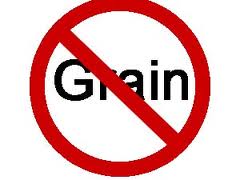 You will never, ever find any type of grains in high quality commercially available pet foods, nor will you ever find it in healthy recipes for homemade pet meals. Where you’ll find it are in very affordable, highly processed, very low-quality pet foods.
You will never, ever find any type of grains in high quality commercially available pet foods, nor will you ever find it in healthy recipes for homemade pet meals. Where you’ll find it are in very affordable, highly processed, very low-quality pet foods.
Found in all pet foods that are not grain-free…. AVOID them all!
Rice Gluten: Really bad stuff! Pure junk. Waste product. Similar to corn gluten meal, the dried residue from rice after the removal of the larger part of the starch and germ, and the separation of the bran by the process employed in the wet milling manufacture of rice starch or syrup, or by enzymatic treatment of the endosperm.
Garbage filler, waste product, pure junk and a very poor protein source. Can trigger allergies and other problems in cats and dogs. Can encourage diabetes and other very serious illnesses and diseases leading to premature death.
Rice gluten is often imported from China and could be very dangerous.
In nature, carnivores (dogs) and obligate carnivores (cats) don’t eat rice gluten.
Pet foods containing quality ingredients never, ever use rice gluten in any of their products.
You will never, ever find rice gluten in high quality commercially available pet foods, nor will you ever find it in healthy recipes for homemade pet meals. Where you’ll find it are in very affordable, highly processed, very low-quality pet foods.
Rice Hulls: Really bad stuff! Pure junk. Waste product. Ground outer casings of rice and an utter waste product. Cheap filler, harsh on intestines. Has ABSOLUTELY no nutritional value. Better used as a fertilizer than a dog/cat food ingredient.
Found in the very lowest quality pet food. Indicates a very poor quality product. Avoid pet food with this ingredient!
In nature, carnivores (dogs) and obligate carnivores (cats) don’t eat rice hulls.
Pet foods containing quality ingredients do not use rice hulls in any of their products.
You will never, ever find rice hulls in high quality commercially available pet foods, nor will you ever find it in healthy recipes for homemade pet meals. Where you’ll find it are in very affordable, highly processed, very low-quality pet foods.
Salt: Because salt absorbs water in the body, a cat / dog that has consumed too much of it will become extremely thirsty. He / she will drink more water than usual to accommodate their thirst which will lead them to urinate more as their body struggles to process the salt quickly. As their circulatory system and kidneys try to cope, they will become strained and cause their body to swell. Cats / dogs may even vomit, have diarrhea or seizures. These are all symptoms of sodium ion poisoning.
You will never, ever find added salt in high quality commercially available pet foods, nor will you ever find it in healthy recipes for homemade pet meals. Where you’ll find it are in very affordable, highly processed, very low-quality pet foods like Purina, Black Gold, Rachael Ray Nutrish and Redpaw.
Sodium Metabisulphite: A chemical preservative that has been found to have caused weakness, loss of consciousness, difficulty swallowing and brain damage in people.
Found in the very lowest quality pet food. Indicates a very poor quality product. Avoid pet food with this ingredient!
Pet foods containing quality ingredients never, ever use sodium metabisulphite in any of their products!
You will never, ever find sodium metabisulphite in high quality commercially available pet foods, nor will you ever find it in healthy recipes for homemade pet meals. Where you’ll find it are in very affordable, highly processed, very low-quality pet foods.
Sorbic Acid: A mold and yeast inhibitor, no nutritional value.
Sorgum: See Rice
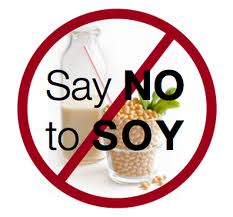 Soy, Soy Flour, Soybeans, Soybean Oil, Soy Lecithin, Soy Protein, Soybean Meal or any Soy product: Really bad stuff! Pure junk. Waste product. Major source of pet allergies and a host of other very serious problems in cats and dogs. Don’t even think about buying pet foods with these ingredients.
Soy, Soy Flour, Soybeans, Soybean Oil, Soy Lecithin, Soy Protein, Soybean Meal or any Soy product: Really bad stuff! Pure junk. Waste product. Major source of pet allergies and a host of other very serious problems in cats and dogs. Don’t even think about buying pet foods with these ingredients.
Found in very low quality pet foods that use cheap soy instead of more expensive meat as a protein source/filler. Indicates a very poor quality product. Avoid pet food with these ingredients!
Soy is estrogenic and wreaks havoc on your pet’s endocrine system.
Soy has been linked to gas and deadly bloat in dogs. It is high in purines and is therefore a completely inappropriate protein source for urate-forming dogs. It is also high in silicates, promotes the formation of silica stones and is 100% GMO!
The carbohydrate action of soy can cause a rise in blood sugar in many cats. Soy is also linked to thyroid damage, and since hyperthyroidism is common in cats, this is yet another reason it should not be part of a feline’s diet. The ingestion of soybean products is also linked to seizures in both dogs and cats.
In nature, carnivores (dogs) and obligate carnivores (cats) don’t eat soy or any soy derivatives. Pet foods containing quality ingredients never, ever use soy in any of their products!
You will never, ever find any soy products in high quality commercially available pet foods, nor will you ever find it in healthy recipes for homemade pet meals. Where you’ll find it are in very affordable, highly processed, very low-quality pet foods.
Found in very low-quality pet foods from Pedigree, Purina, Alpo, Rachael Ray Nutrish, Kal Kan, Ol’ Roy, Friskies, Whiskas, Science Diet, Hill’s Prescription Diet, 9Lives, Pup-Peroni, Skippy, Retriever, Royal Canin, Royal Canin Veterinary Care Nutrition, Royal Canin Veterinary Therapeutic Formulas and many others.
Soybean Mill Run & Husks: Pure junk. Ground outer casings of soybeans and an utter waste product from soybean milling operations, floor seepings. Cheap filler, harsh on intestines. Has ABSOLUTELY no nutritional value. Better used as a fertilizer than a dog/cat food ingredient.
Found in low-quality pet foods like Hill’s Prescription Diet (sold exclusively by vets!).
Sugar: Major cause of a host of serious illness and disease in cats/dogs.
Sugar causes diabetes, hypoglycemia, weight gain, nervousness and fearful behavior, cataracts, periodontal disease, ill health in general and a host of other symptoms and diseases.
Found in corn, sucrose, cane sugar, caramel, corn syrup, molasses and other ingredients. Some low-quality pet foods add sugar as a separate named ingredient, which is really bad.
You will never, ever find sugar in high quality commercially available pet foods, nor will you ever find it in healthy recipes for homemade pet meals. Where you’ll find it are in very affordable, highly processed, very low-quality pet foods such as Purina, 9Lives, and Pup-Peroni among many others.
Tapioca: Cheap starch and filler, nutritionally void. Extracted from the root of the cassava plant. Used as a carbohydrate source in grain free dog foods but due to its general lack of all nutrients other than starch, it’s regarded as a low grade filler for dogs.
Tertiary Butylhydroquinone (TBHQ): is a chemical, fat preservative used in pet food to delay the onset of rancidness and greatly extend the storage life of foods.
TBHQ is also used to stabilize certain explosive compounds and to make varnishes, lacquers and resins. Yum…..
May cause nausea, delirium, collapse, tinnitus and vomiting. Long-term, high doses of TBHQ in laboratory animals have shown a tendency for the animals to develop cancerous precursors in their stomachs and begin to present DNA damage and may lead to other types of cancer.
Vegetable Oil – Really bad stuff! Pure junk. Waste product. Very bad and generic cheap ingredient.
This particular ingredient is anonymous, meaning it doesn’t even specify the vegetable source because the manufacturers don’t know what they are.
Usually contains high levels of rancid restaurant grease or other oils that are deemed inedible for humans. Restaurant grease comes from discarded oils and fats, even dangerous trans-fats that have been salvaged after frying foods at very high temperatures. Fats and oils raised to high cooking temperatures like this have been known to produce unwanted cancer-causing compounds known as carcinogens.
You will never, ever find vegetable oil in high quality commercially available pet foods, nor will you ever find it in healthy recipes for homemade pet meals. Where you’ll find it are in very affordable, highly processed, very low-quality pet foods. Quality foods always have a named source like more expensive canola oil.
Found in very low-quality pet foods from Pedigree, Ol’ Roy, Purina, Royal Canin Veterinary Therapeutic Formulas and Royal Canin Veterinary Care Nutrition.
Wheat Gluten: Really bad stuff! Pure junk. Waste product, very poor protein source. Widely used as a weed suppressant, herbicide and fertilizer for lawns. One of the worst (and cheapest) ingredients in pet food.
Wheat gluten is often imported from China and could be very dangerous. Untold numbers of cats and dogs were sickened and died in 2007 by being poisoned from eating pet foods containing wheat gluten laced with melamine (a chemical found in fertilizers) imported from China.
Very poor protein source, used as a cheap, non-nutritive filler. Ingredients have inferior amino acid profiles and are poorly digested, making them a very poor substitute for meat.
Major source of pet allergies and a host of other problems in cats and dogs. It triggers seizures and skin problems such as itching, excessive shedding, eye and ear infections and causes irritable bowel problems.
Better used as a popular weed suppressant, herbicide and fertilizer than an ingredient in pet food.
Found in very low quality pet foods that use cheap wheat sources instead of more expensive meat as a protein source. Indicates a very poor quality product. Avoid pet food with this ingredient!
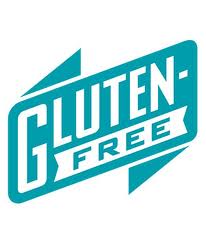 In nature, carnivores (dogs) and obligate carnivores (cats) don’t eat wheat gluten.
In nature, carnivores (dogs) and obligate carnivores (cats) don’t eat wheat gluten.
Pet foods containing quality ingredients never, ever use wheat gluten in any of their products.
You will never, ever find wheat gluten in high quality commercially available pet foods, nor will you ever find it in healthy recipes for homemade pet meals. Where you’ll find it are in very affordable, highly processed, very low-quality pet foods.
Found in very low-quality pet foods from Royal Canin, Alpo, Science Diet, Royal Canin Veterinary Therapeutic Formulas, Royal Canin Veterinary Care Nutrition and Vita Bone Biscuits.
Wheat, Wheat flour, Wheat Bran, Wheat Germ, Wheat Protein or any Wheat Product: Really bad stuff! Pure junk. Waste products, very poor sources of protein. Major source of pet allergies and a host of other problems in cats and dogs. Don’t even think about buying pet foods with these ingredients.
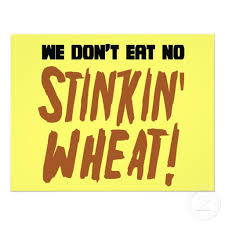 Wheat products trigger seizures and skin problems such as itching, excessive shedding, eye and ear infections and causes irritable bowel problems.
Wheat products trigger seizures and skin problems such as itching, excessive shedding, eye and ear infections and causes irritable bowel problems.
Found in very low quality pet foods that use cheap wheat sources instead of more expensive meat as a protein source. Indicates a very poor quality product. Avoid pet food with these ingredients!
In nature, carnivores (dogs) and obligate carnivores (cats) don’t eat wheat or any wheat derivatives.
Pet foods containing quality ingredients never, ever use wheat in any of their products.
You will never, ever find any wheat products in high quality commercially available pet foods, nor will you ever find them in healthy recipes for homemade pet meals. Where you’ll find them are in very affordable, highly processed, very low-quality pet foods.
Found in very low-quality pet foods from Pedigree, Purina, Ol’ Roy, Science Diet, Hill’s Prescription Diet, Retriever, Skippy, Kal Kan, Royal Canin Veterinary Therapeutic Formulas, Royal Canin Veterinary Care Nutrition and Vita Bone Biscuits.
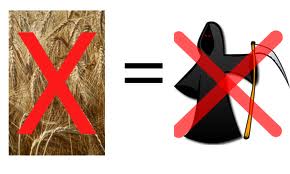 Wheat Middlings, Wheat Mill Run: Really bad stuff! Pure junk. Waste product. Wheat parts leftover from human food processing, commonly referred to as floor sweepings. Useless filler. Don’t even think about buying pet foods with this ingredient.
Wheat Middlings, Wheat Mill Run: Really bad stuff! Pure junk. Waste product. Wheat parts leftover from human food processing, commonly referred to as floor sweepings. Useless filler. Don’t even think about buying pet foods with this ingredient.
Major source of pet allergies. It triggers seizures and skin problems such as itching, excessive shedding, eye and ear infections, causes irritable bowel problems and other very serious illnesses in dogs/cats.
In nature, carnivores (dogs) and obligate carnivores (cats) don’t eat wheat middlings.
Found in the very lowest quality pet food. Indicates a very poor quality product. Avoid pet food with this ingredient!
Pet foods containing quality ingredients never, ever use wheat middlings in any of their foods!
You will never, ever find wheat middlings in high quality commercially available pet foods, nor will you ever find it in healthy recipes for homemade pet meals. Where you’ll find it are in very affordable, highly processed, very low-quality pet foods like Kal Kan, Retriever and Vita Bone Biscuits.
Sources:
Euthanized Pets for Use in Pet Food – It’s True!
What’s Really for Dinner – The Truth About Commercial Pet Food!
The True Horrors of Pet Food Revealed: Prepare to be Shocked by What Goes into Dog and Cat Food!
Poisons in Pet Food
Food Pets Die From
The Dark Side of Pet Recycling: Rendering Plants
The Dark Side of Recycling
Let the Truth Be Known (Video)
What’s Really in Pet Food
Processed Pet Food: Why You Should Avoid It
Dog and Cat Nutrition: The Optimum Natural Diet
The Truth About Cat and Dog Food
What’s Really for Dinner; The Truth About Commercial Pet Food
The Truth About Pet Food
The Whole (istic) Truth About Pet Food
The Truth About Pet Food
Why is Cancer Killing Our Pets?
Elimination of Common Diseases in Cats and Dogs Through Diet Alone
The BARF Diet
Ingredients to Avoid in Pet Food
Cat Food Ingredients to Avoid
Why Nutrition matters to Your pets
The Truth About the Pet Food Industry
A Look Inside a Rendering Plant
The Top 12 Ingredients to Avoid and Who Uses Them
Worst Pet Food Ingredients
Avoid These Ingredients in Pet Food
The Poisons in Pet Food
The Sickening Truth About Pet Food
The Truth About Commercial Pet Food
Ingredients to Avoid in Commercial Dog Food
Ingredients to Avoid in Dog Food
10 Dog Food Ingredients to Avoid in Quality Dog Food
Dog Food Ingredients to Avoid (1)
The Seven Sinful Foods Your Dog Must Avoid
Dog Food Ingredients to Avoid (2)
The Dog Food Project – Ingredients to Avoid
Grains Are Very, Very Bad for Your Cat, says DVM
The Dirt On Some Bad Commercial Cat Food Ingredients
Grains and Corn Must be Avoided In Cat Foods
Canned Cat Food- The Good, the Bad, and the Toxic
Why You Should Not Feed Your Cat Iams (Or Any Other Cheap Food)
“When are pet owners going to wake up? Studies suggest that up to 95% of illness and disease in cats and dogs are food related and over-vaccinations also play a big role leading to premature death.” Roger Biduk
